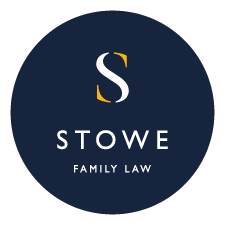“Through this Bill I want to fundamentally change the way we as a country think about domestic abuse, recognising that it is a crime that comes in many forms – physical, emotional, economic. This is about creating a society that protects individuals and families at the earliest opportunity, before such abuse has a chance to escalate. This is a once in a generation opportunity to transform our entire approach to this terrible crime.”
- Home Secretary Amber Rudd
Seeing as it is one of the biggest family law news stories for some time, I felt I should say a little bit more about the domestic abuse consultation Transforming the Response to Domestic Abuse, that was announced by the Home Office and Ministry of Justice last week. The consultation will seek views on measures to be included in the government’s draft Domestic Abuse Bill.
The first thing to say is that I agree entirely with Sarah Jane Lenihan, Senior Solicitor in Stowe Family Law’s London office, that stopping domestic abuse is an impossible task. Politicians of all sides regularly promise to ensure that a certain bad thing will never happen again. Of course, it is usually impossible to ensure any such thing. Sadly, that is certainly the case with domestic abuse, despite the Home Secretary and Justice Secretary saying in the foreword to the consultation that “this government is committed to doing everything we can to end domestic abuse.” No matter what new policies are enacted, and no matter what promises the politicians make, it will never be eradicated. The best that we can hope for is to reduce the incidence of domestic abuse to the lowest possible level and, as Sarah says, one of the best ways of achieving this objective is to raise public awareness, something that the consultation proposals aim to do, as we will see in a moment.
OK, having got that out of the way, on to the consultation. It is split into four parts: promoting awareness of domestic abuse, protecting and supporting victims, pursuing and deterring perpetrators, and ‘improving performance’, i.e., increasing “performance and greater consistency in the way all sectors respond to domestic abuse across all geographical areas.” I will deal with each in turn, although I should say at the outset that there is far too much in the consultation to cover everything in detail in one blog post. I will concentrate on the points that I think will be of particular interest to family lawyers, and apologise in advance if you think I have not mentioned, or glossed over, anything of importance – this is only a very brief look at a complex matter.
Promoting awareness
This includes such things as introducing a new statutory definition of domestic abuse and educating young people on ‘healthy relationships’. As to the latter, I would have thought that this should be an essential part of the education curriculum in any event – far more important than many of the esoteric topics that are taught in schools.
As to the new definition, I’m not going to comment on the specifics of what is included in it, which I suspect will alter as matters proceed. Instead, I’m more concerned with the fixation upon a definition. The problem is obviously that no definition of such a subject can ever be complete, and it is easy to see that some may consider that certain behaviour is not abusive, simply because it doesn’t fall within the definition. What is needed, as always, is the application of common sense, which will quickly determine what is abusive, and what is not. And in any event the emphasis upon a definition presupposes that the definition will become common knowledge. I very much doubt that it will, thus adding little to the awareness issue.
Protecting and supporting victims
There is a lot under this heading, but the main point of interest for lawyers is clearly the proposal that a new Domestic Abuse Protection Order (DAPO) be created. DAPOs could be made by either civil or criminal courts (although of course the two have different standards of proof) and could include conditions, such as that the abuser undergo compulsory alcohol treatment, or attend a programme to address their underlying attitudes or addictions. Further, electronic tagging could be used to monitor them. These ideas appear on their face to be eminently sensible, both protecting victims and dealing with the underlying issues.
Also under this heading is a proposal to put the Domestic Violence Disclosure Scheme into law.
Pursuing and deterring perpetrators
This includes improving the (alleged) victims’ experience of the justice system, to ensure they come forward and support prosecution through to conclusion, and “ensuring that sentencing of domestic abuse related offences duly recognises the devastating impact of domestic abuse on victims and any children involved”.
As to the former, the consultation mentions for example the possibility of courts protecting alleged victims by using screens or video links. It does not, however (as far as I can see) say anything about protecting alleged victims from being cross-examined by their alleged perpetrators. As I have said here before, a reform to deal with this would have been brought in by the Prisons and Courts Bill, but for the general election.
As to the latter, new guidelines were of course issued by the Sentencing Council last month – see this post.
Improving performance
I don’t propose to say very much here – it is really about collecting and using relevant data. One proposal of note is the appointment of a ‘Domestic Abuse Commissioner’, “who would provide public leadership on domestic abuse issues and play a key role in overseeing and monitoring provision of domestic abuse services in England and Wales.” Call me old fashioned, but it seems to me that the modern answer to everything is to add to the ever-growing bureaucracy by appointing someone or something to oversee it, only to find that that person or body is completely toothless. I’m really not sure how a public leader on domestic abuse issues is likely to improve matters, but hopefully I will be proved wrong.
* * *
Will all or any of this transform the response to domestic abuse? It certainly has the potential to improve matters particularly, as I said at the outset, by raising public awareness. Of course, the trick is to raise awareness permanently, rather than just temporarily by publicising the issue – whether the promoting awareness proposals will do that, I somewhat doubt. As to the other proposals, perhaps the most significant are the new DAPOs and their conditions, and the protections for alleged victims in court (which will hopefully eventually include protection against cross-examination by alleged abusers – quite why this was left out of the consultation, I don’t know). I think these things will make a difference, although whether it is transformative is another matter.
You can read the consultation here. If you would like to respond, go here. Responses must be in by 31 May.



You need to stop using hearsay as the standard of proof. It’s a joke that someone (a woman) could say “I’ve been abused” and her ex-partner gets tagged. As someone who has already been tagged for sending a single text apologising and pleading to co-parent it brings me onto my next point – this is a mechanism for domestic abuse by proxy.
Speaking of educating people – this is used day in day out in civil proceedings by untrained SW, Cafcass officers and Magistrates – let me be very clear – THIS IS NOT JUSTICE it hands an unquestionable mechanism of abuse to the perpetrators evidence-free. IT NEEDS TO STOP.
Let us notice the use of words. In the recent “guidance on sentencing” perpetrators” are the male version of domestic abusers, and “offenders” are the female version! Neat, isn’t it! So although this will all be “equality based” – men and women equal etc etc in fact males will be the target in line with the “prevention of violence to women and girls” VAWG – when in familial violence more girls are abused by their mother than by their father,Children are no less damaged by witnessing their mother’s violence to their father than they are by witnessing their father’s violence to their mother. Really informative data about “frequency” comes from Dr Tonia Nicholls Youtube clip: https://youtu.be/RtOsEkY_UHc